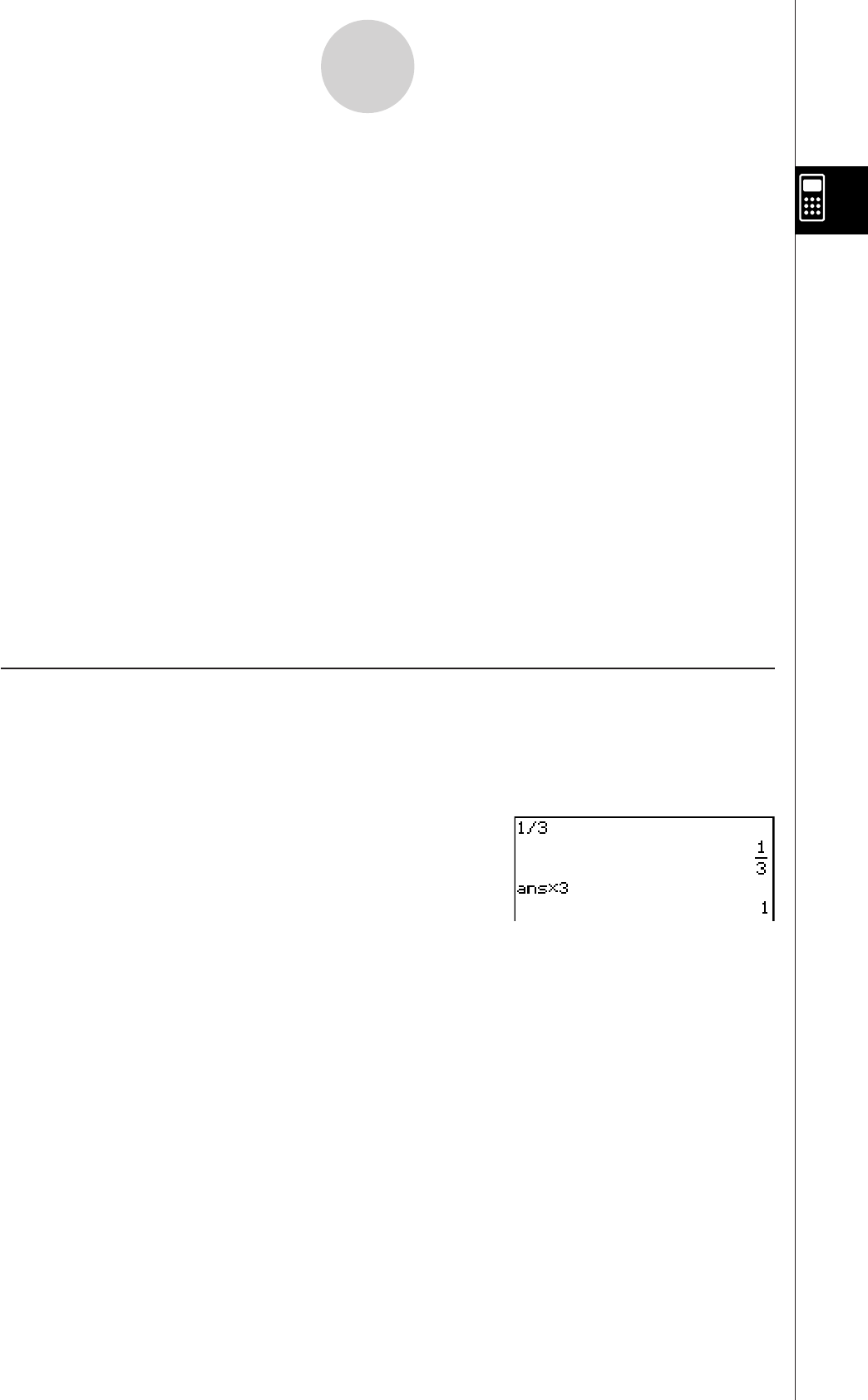
20060301
2-2-3
Basic Calculations
Tip
• The “ans” variable is a system variable. For details about system variables, see “1-7 Variables
and Folders”.
• Since “ans” is a variable name, you can specify the “ans” variable by inputting [a][n][s] on the
(alphabet) keyboard, or by tapping the
#
key on the
or the
keyboard.
• The “ans” variable stores the result of your last or most recent calculation.
• The work area maintains a calculation history of the calculations you perform (page 2-3-1). Any
instance of the “ans” variable in the calculation history contains the result of the calculation
immediately prior to that instance. You can use “ans” as many times as you want in calculations,
as long as you remember that the value or expression assigned to each “ans” variable in the
calculation history is determined by the calculation immediately preceding it.
• Using the “ans” variable in a calculation results in an error if the previous calculation produced an
error display or after a program produces the “done” message on the display.
• The format of the calculation result value assigned to the “ans” variable depends on the Basic
Format dialog box [Number Format] setting (page 1-9-5). The following illustrates the format used
when “Fix2” is selected for the [Number Format] setting.
approx (1/3)
U
0.33
ans
s
3
U
0.99
See “Standard Mode and Decimal Mode” on page 2-2-6.
I
Performing Continuous Calculations
Answer memory also lets you use the result of one calculation as one of the arguments in
the next calculation.
Example: 1 ÷ 3 =
1 ÷ 3 × 3 =
*
@B
U_
(Continuing)
B
U
Continuous calculations can be used with +, –,
s
,
÷
,
and
^
.


















